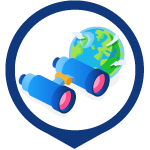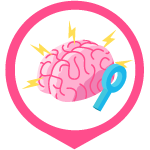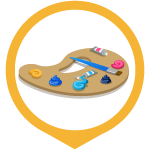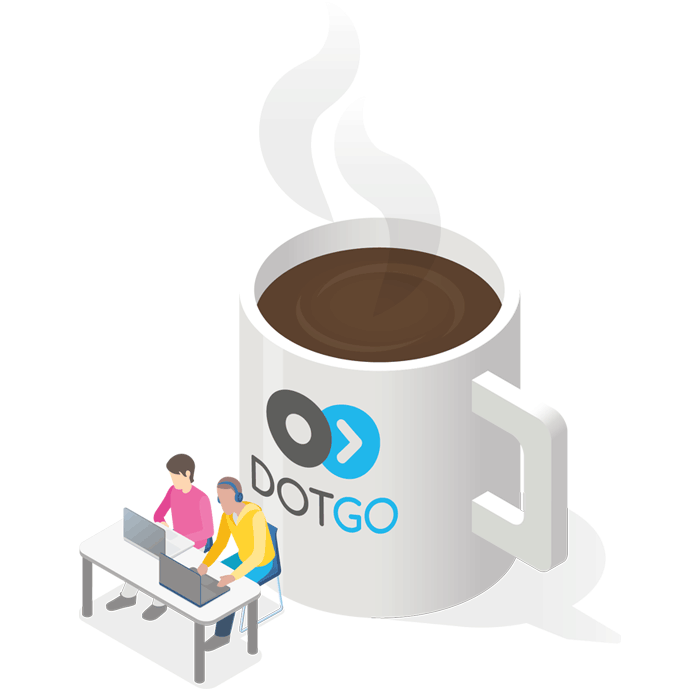When creating a new website, it is important to use it as a tool to reflect your business and branding. But good website design needs to also put your customers first and foremost. A website needs to be pulling in the same direction as the rest of your business and marketing, so it is important that the journey your visitors go on is the right one.
What is the purpose of the website?
It sounds like a simple question, but there is more to it that meets the eye. Is your website a tool to showcase a service, or sell products? What would the ideal visitor do on your site? When planning a website, we need to be able to answer these questions. Only when armed with the answers can we start to think about how your customers will need to be directed around your website.
Let us imagine we have a construction business. We want people to see the website, see the quality of our work, but most importantly get in touch so we can provide them with a quote. A phone number at the top of the website provides a quick and simple method of communication, but what about people who are browsing the website late at night, we don’t want them to put off getting in touch there and then? Online chat tools could be used for instant communication, but it could be hard to get the detail needed for a quote, and if someone contacts you while you are on a job, you may see the message too late. An enquiry form could be used to collect contact details and built around the questions that will help with your quote, perhaps even giving the option for a picture to be uploaded, this form would collect all the details and send it over in an email for you and therefore your customer would not be expecting an instant reply.
Now we have decided that a custom-built enquiry form is the best bet for our customers to request a quote, we need to think about how our customers would need to interact with it. They are unlikely to visit your website and immediately fill out a form that is presented to them, so it could be worth giving some information about services or a gallery of works, and then following up with the form. Some people may be repeat customers who have already had a look and are ready to take the next step, so we need some easy to find forms too.
What would your visitors need to see?
When you first visit a website, what do you look at first?
For some people it may be to take in the pictures, or to read the opening paragraph, I personally tend to skim the top menu options to get a quick summary of what the website wants to tell me about. We are all different, and therefore putting yourself into the shoes of a customer will never be perfect, but there are some things to keep in mind that are key for your specific business; A physical shop or restaurant would need to tell customers where they are based, an online shop will need to easily point people to the product ranges they stock while a website for an optician may want to consider making the text a little larger. When creating your own website, it’s very easy to get stuck in the mindset of "I like the look of this", but at the end of the day, you are not the target visitor for your own website so it’s always worth getting someone else involved to explore the structure, read the text, and make sure they come away understanding what the purpose of your website is.
Need some help making your site work your your business? Our designers work with you to understand your website purpose and who your customers are, get in touch and we can have a chat about what we can do with you.
The DotGO Way
The easiest website design process you'll ever experience
We squeezed 23 years of practice and thousands of websites into a process that feels effortless and fun.
Every website we design has its challenges
The DotGO Way evolved to keep things moving by identifying
and resolving issues before they become problems.
5 simple steps

1. Discovery
Meet our Design Portal. An amazing collaboration area that helps us share ideas, files and expectations. We deep dive into your business and learn as much about you as we can. What are your goals? What makes you unique? What is the purpose of your website? This is where your enthusiasm and ideas meets our imagination.

2. Preparation
We've learned that what look great to us might not look good in your eyes. Our job is to learn what's in your mind. Your own designer will search for stock images and photos to supplement your own. This is the time to work with to find the most optimal Google search phrases to get you found.

3. Content Writing
Have a talk with our amazing Wordsmiths – our content writers will find the right tone of voice , and turn your ideas into engaging, fully Google-optimised web copy. You also get your own personal copy of this professional written content.

4. Design
Our time to shine. We've taken our time to learn what is important to you, so we can now bring together all of your ideas, branding, imagery and written content, and design an incredibly beautiful, powerful and responsive website.

5. Finalisation
Before we 'hand you the keys', we make any tweaks required and provide full training so you can make changes and navigate your powerful control panel.
We'd love to tell you more
Schedule a chat.
or grab a cuppa and give us a call
01883 776112


